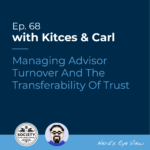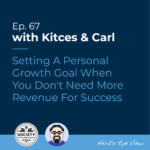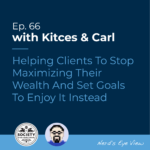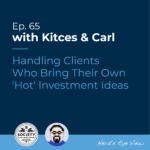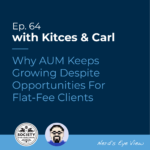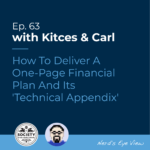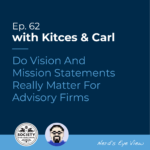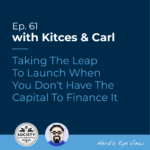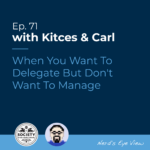
Many long-time solo financial advisory firm owners with successful practices are eventually faced with the choice either to continue growing their practice into a larger-scale business, or to deliberately level growth so that they can maintain a solo ‘lifestyle’ practice. Owners who choose not to further grow their firms tend to target a different set of goals in comparison to growth-oriented owners looking to increase revenue and clientele, as these lifestyle practice owners often have goals that involve having more time and flexibility to enjoy life outside of the firm. For these owners, this can mean that they will eventually need to consider hiring team members or using outsourced solutions to help them with the tasks that they may dislike or consider too time consuming. However, small firm owners who may not have had to rely on other employees may be concerned about the extra work that comes with hiring employees, and how it might detract from their flexibility and ability to maintain their ideal vision of a lifestyle practice.
In our 71st episode of Kitces & Carl, Michael Kitces and client communication expert Carl Richards discuss how firm owners can approach the hiring decision by first considering their own goals and then deciding what kind of assistance they need to maximize their freedom while maintaining a healthy practice.
The first step for the owner is to be clear on how they want to maintain their firm. This introspection can help the owner identify their priorities so that their actions align with the right goals, and can serve as a check against ill-suited goals that might simply be based on what other businesses may be doing. This exercise can also help the firm owner draw out what exactly makes them happy, which, for many firm owners, can simply be to have a certain level of flexibility between their professional and personal lives.
Then, depending on how they want to operate their firm and the goals they have in place, firm owners can prioritize the range of responsibilities they want to keep for themselves and those they are willing to delegate. For some advisors, this could mean figuring out how to free up space in their schedule, whether it be through extending the interval between investment performance reports or finding ways to reduce time spent on email during the day. If the owner decides to hire a new employee to manage some of the firm's responsibilities, they do not necessarily need to spend more time in the office working with the new hire or grooming them to take on ever-increasing responsibilities. Technology provides opportunities for fully virtual employees, and firm owners might be surprised to find out how many potential candidates would thrive at the tasks the owners themselves do not enjoy!
Another option to help owners delegate responsibilities is to outsource tasks, potentially giving them to a part-time virtual employee or by tucking into a larger firm that can handle back-office responsibilities. This can allow the firm owner to spend more time on client-facing activities that may be the most enjoyable part of their work, while getting the back-office support they need to sustain those client relationships as well as their desired level of work-life balance.
Ultimately, the key point is that by first considering their own goals and the range of tasks to keep or delegate, firm owners who are considering outside help may find it easier to decide if they should hire a new employee or outsource the work. Regardless of the reason – whether it be a firm owner who chooses to maintain a small lifestyle practice or to transition from a solo practice to a business enterprise – prioritizing the most important work processes and streamlining (or getting rid of!) those that are unproductive are helpful exercises for any advisory firm!


